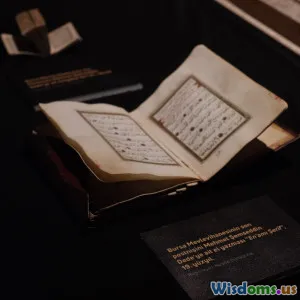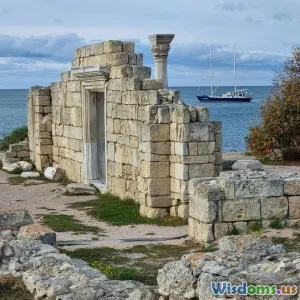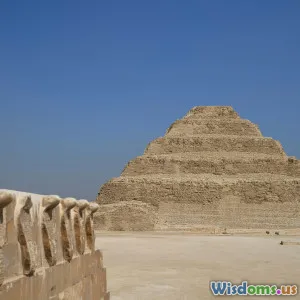
The Secrets of Ancient Manuscripts
6 min read Explore the mysteries of ancient manuscripts, revealing their significance, preservation, and the insights they offer into ancient civilizations. (0 Reviews)
The Secrets of Ancient Manuscripts
Introduction
The allure of ancient manuscripts has captivated the minds of historians, archaeologists, and the general public for centuries. These fragile artifacts hold within them the stories, beliefs, and practices of civilizations long past. But what secrets do these ancient texts reveal, and how do they continue to shape our understanding of history?
In this article, we will explore the significance of ancient manuscripts, the techniques used for their preservation, and the invaluable insights they offer into the lives of people from ancient times.
The Significance of Ancient Manuscripts
Ancient manuscripts are more than just pieces of paper or parchment; they are windows into the past. Often created by scribes, monks, or scholars, these texts can include anything from religious scriptures and philosophical treatises to poetry and administrative records. Their significance lies in several key areas:
1. Cultural Insights
Manuscripts provide a glimpse into the cultural practices, beliefs, and values of ancient societies. For instance, the Dead Sea Scrolls, discovered in the mid-20th century, have shed light on the Jewish sects of the Second Temple period and have influenced our understanding of early Christianity.
2. Historical Documentation
Many ancient manuscripts serve as primary sources that document historical events, societal structures, and political dynamics. The Annals of Tacitus, written by the Roman historian Tacitus, provide a detailed account of the Roman Empire and its emperors, offering valuable insights into governance and society.
3. Language and Literature
Manuscripts also play a crucial role in the study of language and literary evolution. The Epic of Gilgamesh, one of the oldest known pieces of literature, showcases the early use of cuneiform script and provides insights into Mesopotamian culture and mythology.
Preservation Techniques
As fragile artifacts, ancient manuscripts require meticulous care to ensure their longevity. Various preservation techniques have been developed over the years to protect these texts from deterioration.
1. Environmental Control
Manuscripts are best preserved in stable environments with controlled temperature and humidity levels. High temperatures and humidity can lead to mold growth, while low humidity can cause brittleness.
2. Digital Preservation
In the digital age, many institutions are turning to digitization to preserve ancient manuscripts. High-resolution scans allow these texts to be shared globally without risking damage to the original documents. The British Library and the Library of Congress have extensive digital collections accessible to researchers and the public alike.
3. Restoration Techniques
When manuscripts are damaged, skilled conservators employ various restoration techniques. This might include cleaning, re-binding, or even reconstructing missing sections using materials that mimic the original.
Insights from Ancient Manuscripts
The study of ancient manuscripts continues to yield astonishing discoveries that reshape our understanding of history.
1. New Historical Contexts
Recent discoveries, such as the Nag Hammadi Library, have unveiled texts that challenge established narratives about early Christianity and Gnosticism. These texts provide alternative perspectives on theological debates of the time.
2. Social Structures
Manuscripts often contain records of administrative practices, social hierarchies, and economic transactions. The Code of Hammurabi, for example, offers insight into Babylonian law and societal norms, shaping our understanding of justice in ancient cultures.
3. Cultural Exchange
Ancient manuscripts often highlight the interconnectedness of different civilizations. The Silk Road, for instance, facilitated not only trade but also the exchange of ideas and cultural practices, as evidenced by manuscripts found in regions across Asia and Europe.
Conclusion
The secrets of ancient manuscripts are as diverse as the civilizations that created them. These texts are invaluable treasures that provide insight into our shared human history, revealing the beliefs, practices, and stories of those who lived long before us. As we continue to preserve and study these manuscripts, we unlock more of the mysteries of our past, ensuring that the voices of ancient civilizations resonate for generations to come.
Whether through meticulous preservation techniques or the advent of digital technology, the legacy of ancient manuscripts remains not just a key to understanding our history, but also a bridge connecting us to our ancestors.
Rate the Post
User Reviews
Popular Posts




















